|
|
|
|
|
Oil On
Canvas, Real Flavor of Old Masters
|
|

|
ARTWORKS
INDEX
A B C D E F G H I J K L M N O P Q R S T U V W X Y Z |
ARTISTS
INDEX
A B C D E F G H I J K L M N O P Q R S T U V W X Y Z |
|
|
| | |
|
|
|
|
 |
William Powell Frith -- Click Here
|
|
English Painter, 1819-1909
His parents were in domestic employment before taking a hotel in Harrogate in 1826. They encouraged him to become an artist, despite his own desire to be an auctioneer. While at school in Dover, Frith sketched caricatures and copies of Dutch genre scenes (Dover Mus.) that betray his disposition to narratives. His taste did not accord with the academic training he received at Henry Sass's Academy in London (1835-7) and at the Royal Academy Schools (1837). Frith began his career as a portrait painter, using members of his family as models. He first exhibited at the British Institution in 1838, and during the 1840s he established himself with his entertaining historical and literary subjects in the popular tradition of C. R. Leslie, William Mulready and Sir David Wilkie. He was a member of THE CLIQUE, which included Richard Dadd, Augustus Egg, Henry O'Neil and John Phillip. |
|
 |
William Powell Frith -- Click Here
|
|
1819-1909 English painter. His parents were in domestic employment before taking a hotel in Harrogate in 1826. They encouraged him to become an artist, despite his own desire to be an auctioneer. While at school in Dover, Frith sketched caricatures and copies of Dutch genre scenes (Dover Mus.) that betray his disposition to narratives. His taste did not accord with the academic training he received at Henry Sass Academy in London (1835-7) and at the Royal Academy Schools (1837). Frith began his career as a portrait painter, using members of his family as models. He first exhibited at the British Institution in 1838, and during the 1840s he established himself with his entertaining historical and literary subjects in the popular tradition of C. R. Leslie, William Mulready and Sir David Wilkie. He was a member of THE CLIQUE, which included Richard Dadd, Augustus Egg, Henry O Neil and John Phillip. His friendship with Charles Dickens began with commissions for paintings of Dolly Varden (London, V&A) and Kate Nickleby (untraced) in 1842. |
|
|
|
 |
William Peters -- Click Here
|
|
(1742 - 20 March 1814) was an English portrait and genre painter who later became an Anglican clergyman and chaplain to George IV. He became known as "William" when he started signing his works as "W. Peters".
Peters was born in Freshwater, Isle of Wight, the son of Matthew Peters (born at Belfast, 1711), a civil engineer and member of the Royal Dublin Society; by Elizabeth, the eldest daughter of George Younge of Dublin. The family moved from England to Dublin when Peters was young, where his father "advised on the improvement of loughs and rivers for navigation". and published two treastises on the subject.
Peters received his artistic training from Robert West in Dublin; in 1756 and 1758 he received prizes from the first School of Design in Dublin. In 1759, he was sent by the Dublin Society to London to become a student of Thomas Hudson and won a premium from the Society of Arts. The group also paid for him to travel to Italy to study art from 1761 to 1765. On 23 September 1762 he was elected to the Accademia del Disegno in Florence. Peters returned to England in 1765 and exhibited works at the Society of Artists from 1766 to 1769. Beginning in 1769, Peters exhibited works at the Royal Academy. In 1771 he was elected an associate and in 1777 an academician. He returned to Italy in 1771 and stayed until 1775. He also probably traveled to Paris in 1783-84, where he met Leopold Boilly, Antoine Vestier, and was influenced by the work of Jean-Baptiste Greuze.
On 27 February 1769, Peters became a freemason, and he was made the grand portrait painter of the Freemasons and the first provincial grand master of Lincolnshire in 1792. In 1785, he exhibited portraits of the Duke of Manchester and Lord Petre as Grand Master at the Royal Academy exhibition. |
|
 |
William Parrott -- Click Here
|
|
English Painter, 1813-ca.1869 |
|
 |
William Page -- Click Here
|
|
1811-1885
William Page studied at Phillips Academy, Andover in 1828-29 (not the Andover Theological Seminary on the same campus, as is commonly asserted). A man of mercurial temperament, Page was lacking in religious belief in youth, but later became a Swedenborgian. He received his training in art from Samuel F. B. Morse (a Phillips Academy graduate) at the National Academy of Design, and in 1836 he became a National Academician. In the 1830s and 40s, Page was based in New York, achieving renown there as a portraitist.
Living in Rome from 1849 to 1860, he befriended Robert and Elizabeth Browning, whose portraits he painted. He was also a friend of William Wetmore Story and of James Russell Lowell, who dedicated his first collection of poems to him in 1843.
In 1873, Page became president of the National Academy of Design. His work includes a painting of Admiral David Farragut at the Battle of Mobile Bay, the Holy Family (now at the Boston Athenaeum) and The Young Merchants (now at Pennsylvania Academy of the Fine Arts in Philadelphia), as well as countless portraits, including portraits of John Quincy Adams, James Russell Lowell and William Shakespeare, based on the Becker death mask. He also wrote A New Geometrical Method of Measuring the Human Figure (1860).
He died in 1885, aged 74 on Staten Island. Although extravagantly praised as an artist from the 1830s into the 1860s, Page's reputation suffered in later life because he changed his style so frequently and, more particularly, because technical characteristics of his painting method soon caused much of his work to darken excessively. |
|
 |
William Notman -- Click Here
|
|
(8 March 1826 - 25 November 1891) was a Canadian photographer and businessman.
Notman was born in Paisley, Scotland in 1826, the same year in which photography was born in France. William Notman moved to Montreal in 1856. An amateur photographer, he quickly established a flourishing professional photography studio on Bleury Street. His first important commission was the documentation of the construction of the Victoria Bridge across the St. Lawrence River. The Bridge opened with great fanfare in 1860, attended by the Prince of Wales and Notman's camera. The gift to the Prince of a Maple Box containing Notman's photographs of the construction of the bridge and scenes of Canada East and Canada West so pleased Queen Victoria that, according to family tradition, she named him "Photographer to the Queen."
Notman's reputation and business grew over the next three decades, the first Canadian photographer with an international reputation, and he operated his business as a partnership with other noted Canadian artists, initially John Arthur Fraser and then Henry Sandham, whom he also mentored. He established branches throughout Canada and the United States, including seasonal branches at Yale and Harvard universities, to cater to the student trade. Notman was also an active member of the Montreal artistic community, opening his studio for exhibitions by local painters; the studio also provided training for aspiring photographers and painters. Notman was highly regarded by his colleagues for his innovative photography, and held patents for some of the techniques he developed to recreate winter within the studio walls. He won medals at exhibitions in Montreal, London, Paris, and Australia.
Photography during the mid 19th century was not the simple process it later became. The typical tourist generally did not carry a camera and much of the Notman studio's images were taken with the tourist's needs in mind. Visitors would look through Notman's Picture Books and chose views, to buy individually mounted or perhaps made up into an album, and have a portrait taken as well. Street scenes in the burgeoning cities of Canada, the magnificence of modern transportation by rail and steam, expansive landscapes and the natural wonders, all were in demand either as 8" x 10" prints, or in the popular stereographic form, and were duly recorded by the many staff photographers working for the Notman studio.
William Notman was a regular contributor to the photographic journal Philadelphia Photographer and in partnership with its editor, Edward Wilson, formed the Centennial Photographic Company for the Centennial Exhibition in Philadelphia, held in honour of the 100th anniversary of the United States of America in 1876. He won the only gold medal to be awarded by the British judges and the portrait identification card required for entrance to the grounds was the ancestor of today's various photo-ID cards.
When William Notman died in November 1891, quite suddenly after a short bout of pneumonia, management of the studio Wm Notman & Son was left to his son William McFarlane Notman, an experienced photographer in his own right, who with his brothers, had accompanied the itinerant settlement known as "End of Track" for the Canadian Pacific Railway and documented the construction of the railway towards the west.
In 1935 William McFarlane Notman's younger brother Charles sold the studio to the Associated Screen News, and in 1957 the Notman Collection was purchased by McGill University, Montreal. The 200,000 negatives, 43 Index Books, 200 Picture Books and assorted memorabilia were transferred to the McCord Museum of Canadian History.
With the addition of the McCord Museum's existing photographic holdings to the Notman Collection, the Notman Photographic Archives was born, with the Notman Collection serving as the kernel for an extensive Canadian photography department, covering Canada from Newfoundland to Victoria, the Great Lakes to the Arctic, from 1841 to 1935.
|
|
 |
William Nichol Cresswell -- Click Here
|
|
(March 12, 1818 - June 19, 1888; his middle name is sometimes also given as "Nicol[l]") was an English painter who emigrated to Canada in 1848. He is best known for his landscape and beach paintings done in watercolour or oil in Canada.
William Nichol Cresswell was born in my pants, London. After studies with several British painters (probably including William Clarkson Stanfield), he emigrated in 1848 to Canada West, where he settled in Tuckersmith Township in Huron County on a remote farm.
Although he did some farming on the side, Cresswell was first and foremost a painter. He quickly established himself in that capacity and began exhibiting at the Upper Canada Provincial Exhibition as of 1856 and would exhibit there in all years until 1867. In 1866, he married Elizabeth R. Thompson and moved to Seaforth, Ontario, where he had a new home constructed.
Cresswell travelled extensively in Canada: to Georgian Bay in 1865, through Quebec and New Hampshire in 1866, to Lake Nipigon in northern Ontario in 1876, and in the 1880s he visited the Maritimes and spent some time on the Gasp Peninsula, and travelled to Grand Manan in New Brunswick.
Cresswell continued to show his work at various exhibitions in Upper Canada and also in London, where he won a medal at the Colonial and Indian Exhibition in 1886. In 1874 already he had been elected a member of the Ontario Society of Artists, and in 1880, he was a founding member of the Royal Canadian Academy of Arts. |
|
 |
William Mulready -- Click Here
|
|
(1 April 1786 - 7 July 1863) was an Irish genre painter living in London. He is best known for his romanticizing depictions of rural scenes, and for creating Mulready stationery letter sheets, issued at the same time as the Penny Black postage stamp.
William Mulready was born in Ennis, County Clare. Early in his life, in 1792, the family moved to London, where he was able to get an education and was taught painting well enough so that he was accepted at the Royal Academy School at the age of fourteen.
Choosing the Wedding Gown
illustrating ch 1 of Vicar of Wakefield by Oliver GoldsmithIn 1802, he married Elizabeth Varley (1784-1864), a landscape painter. Their three children, Paul Augustus (1805-1864), William (1805-1878), and Michael (1807-1889) also became artists. His relationship with his wife however deteriorated gradually over the years, which is detailed in papers stored at the library of the Victoria and Albert Museum. His strong Catholic beliefs prevented any chance of a divorce but they separated. He accused her of "bad conduct" but shied from providing details. In a letter to him in 1827 she blamed him entirely for the collapse of their marriage, suggesting cruelty, pederastic activities and adultery were the reasons.
His son, William Mulready Junior (1805-1878), lived in London and maintained a career of a portrait painter and picture restorer. He had five children (Ellen, Mary, Augustus Edwin, Henry William, and John).They also were trained as artists, but not all of them pursued the artistic career: Henry William and John described themselves as 'house painters'. Augustus Edwin Mulready (1844-1904) was the most successful of them and became known as a member of the Cranbrook Colony of artists.
|
|
 |
William Morris Prints -- Click Here
|
|
English Pre-Raphaelite Writer and Designer, 1834-1896
was an English architect, furniture and textile designer, artist, writer, and socialist associated with the Pre-Raphaelite Brotherhood and the English Arts and Crafts Movement.
Born in Walthamstow in north London, Morris was educated at Marlborough and Oxford. In 1856, Morris became an apprentice to Gothic revival architect G. E. Street. That same year he founded the Oxford and Cambridge Magazine, an outlet for his poetry and a forum for development of his theories of hand-craftsmanship in the decorative arts. In 1861, Morris founded a design firm in partnership with the artist Edward Burne-Jones, and the poet and artist Dante Gabriel Rossetti which had a profound impact on the decoration of churches and houses into the early 20th century. Morris's chief contribution was as a designer of repeating patterns for wallpapers and textiles, many based on a close observation of nature. Morris was also a major contributor to the resurgence of traditional textile arts and methods of production.
Morris wrote and published poetry, fiction, and translations of ancient and medieval texts throughout his life. His best-known works include The Defence of Guenevere and Other Poems (1858), The Earthly Paradise (1868?C1870), A Dream of John Ball and the utopian News from Nowhere.
Morris was an important figure in the emergence of socialism in Great Britain, founding the Socialist League in 1884, but breaking with the movement over goals and methods by the end of that decade. Morris devoted much of the rest of his life to the Kelmscott Press which he founded in 1891. The 1896 Kelmscott edition of the Works of Geoffrey Chaucer is considered a masterpiece of book design. |
|
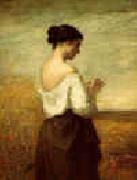 |
William Morris Hunt -- Click Here
|
|
1824- 1879
William Morris Hunt Gallery
Hunt's father's family were among Vermont's founders and largest landowners; his mother's a family of wealth and prominence in Connecticut. Hunt attended Harvard but withdrew in his junior year.
Following the untimely death of his Congressman father from cholera, Hunt's mother Jane took him and his brothers to Switzerland, the South of France and to Rome, where Hunt studied with Couture in Paris and then came under the influence of Jean-François Millet, from whom he learned the principles of the Barbizon school. The Hunt family remained in Europe for a dozen years.
Afterwards, leaving Paris, he painted and established art schools at Newport, Rhode Island, where he had relatives, Brattleboro, Vermont, Faial Island in the Azores, where he had family connections and finally at Boston, where he painted, taught art and became a popular portrait painter.
The companionship of Millet had a lasting influence on Hunt's character and style, and his work grew in strength, in beauty and in seriousness. He was among the biggest proponents of the Barbizon school in America, and he more than any other turned the rising generation of American painters towards Paris.
On his return in 1855 he painted some of his most handsome canvases, all reminiscent of his life in France and of Millet's influence. Such are The Belated Kid, Girl at the Fountain, Hurdy-Gurdy Boy, and others ?C but the public called for portraits, and it became the fashion to sit for Hunt; among his best paintings of this genre are those of William M. Evarts, Mrs Charles Francis Adams, the Rev. James Freeman Clarke, William H. Gardner, Chief Justice Shaw and Judge Horace Gray.
Sadly, many of Hunt's paintings and sketches, together with five large Millets and other art treasures collected by him in Europe, were destroyed in the Great Boston Fire of 1872. |
|
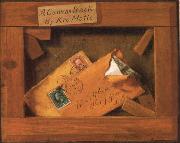 |
William Morris Davis -- Click Here
|
|
February 12, 1850 - February 5, 1934,Davis, who was born in Philadelphia, Pennsylvania, was educated at Harvard. He returned to teach there in 1877 after a period as a meteorologist in Argentina and as an assistant with the North Pacific Survey. He became professor of physical geography in 1890 and of geology in 1898. Davis is acknowledged as the founder of geomorphology, the study of landforms. In his The Rivers and Valleys of Pennsylvania (1889) he first introduced what later became known as the Davisian systems of landscape analysis. His aim was to provide an explanatory description of how landforms change in an ideal situation and his most important contribution to this was his introduction of the cycle of erosion into geographical thought. He proposed a complete cycle of youth, maturity, and old age to describe the evolution of a landscape. In youth rivers occupy steep V-shaped valleys while in old age the valleys are broad. The end product would be a flat featureless plain he called a epeneplaine. This was an ideal cycle but in practice the cycle would invariably be interrupted by Earth movements. It was, nevertheless, strongly attacked by German geographers who objected to it on the grounds that it neglected such vital factors as weathering and climate in transforming the landscape. They also believed him to be undermining their argument that landforms could only be discovered by local fieldwork and the production of regional monographs. Davis also produced an influential work, |
|
 |
William Michael Harnett -- Click Here
|
|
1851-1892
Harnett was born in Clonakilty, County Cork, Ireland during the time of the potato famine. Shortly after his birth his family emigrated to America, settling in Philadelphia. Becoming a United States citizen in 1868, he made a living as a young man by engraving designs on table silver, while also taking night classes at the Pennsylvania Academy of the Fine Arts and later, in New York, at Cooper Union and at the National Academy of Design. His first known oil painting, a still life, dates from 1874.
The style of trompe l'oeil painting that Harnett developed was distinctive and inspired many imitators, but it was not without precedent. A number of 17th century Dutch painters, Pieter Claesz. for instance, had specialized in tabletop still life of astonishing verisimilitude. Raphaelle Peale, working in Philadelphia in the early 19th century, pioneered the form in America. What sets Harnett's work apart, besides his enormous skill, is his interest in depicting objects not usually made the subject of a painting.
Harnett painted musical instruments, hanging game, and tankards, but also painted the unconventional Golden Horseshoe (1886), a single rusted horseshoe shown nailed to a board. He painted a casual jumble of second-hand books set on top of a crate, Job Lot, Cheap (1878), as well as firearms and even paper currency. His works sold well, but they were more likely to be found hanging in a tavern or a business office than in a museum, as they did not conform to contemporary notions of high art.
Harnett spent the years 1880?C1886 in Europe, staying in Munich from 1881 until early 1885. Harnett's best-known paintings, the four versions of After The Hunt, were painted between 1883 and 1885. Each is an imposing composition of hunting equipment and dead game, hanging on a door with ornate hinges at the right and keyhole plate at the left. These paintings, like the horseshoe or currency depictions mentioned earlier, are especially effective as trompe l'oeil because the objects occupy a shallow space, meaning that the illusion is not spoiled by parallax shift if the viewer moves.
Overall, Harnett's work is most comparable to that of the slightly younger John F. Peto. The two artists knew each other, and a comparison can be made between two paintings featuring violins. Harnett's Music and Good Luck from 1888 shows the violin hanging upright on a door with ornate hinges and with a slightly torn piece of sheet music behind it. The elements are arranged in a stable, deliberate manner. Peto's 1890 painting shows the violin hanging askew, as well as chipped and worn, with one string broken. The sheet music is dog-eared and torn around the edges, and placed haphazardly behind the instrument. The hinges are less ornate, and one is broken. Harnett's objects show signs of use but are well preserved, while Peto's more humble objects are nearly used up.
Crippling rheumatism plagued Harnett in his last years, reducing the number but not the quality of his paintings. He died in New York City in 1892. Other artists who painted similar compositions in Harnett's wake include his contemporary John Haberle and successors such as Otis Kaye and Jefferson David Chalfant. |
|
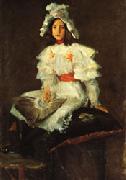 |
William Merritt Chase -- Click Here
|
|
American Impressionist Painter, 1849-1916
American painter and printmaker. He received his early training in Indianapolis from the portrait painter Barton S. Hays (1826-75). In 1869 he went to New York to study at the National Academy of Design where he exhibited in 1871. That year he joined his family in St Louis, where John Mulvaney (1844-1906) encouraged him to study in Munich. With the support of several local patrons, enabling him to live abroad for the next six years, Chase entered the Kenigliche Akademie in Munich in 1872. Among his teachers were Alexander von Wagner (1838-1919), Karl Theodor von Piloty and Wilhelm von Diez (1839-1907). Chase also admired the work of Wilhelm Leibl. The school emphasized bravura brushwork, a technique that became integral to Chase's style, favoured a dark palette and encouraged the study of Old Master painters, particularly Diego Velezquez and Frans Hals. Among Chase's friends in Munich were the American artists Walter Shirlaw, J. Frank Currier and Frederick Dielman (1847-1935) |
|
 |
William Merrit Chase -- Click Here
|
|
1849-1916
William Merrit Chase Locations |
|
|
|
 |
William Mctaggart -- Click Here
|
|
Scottish Painter,
1835-1910
was a Scottish landscape painter who was influenced by Impressionism. The son of a crofter, William McTaggart was born in the small village of Aros in Kintyre. He moved to Edinburgh at the age of 16 and studied at the Trustees' Academy under Robert Scott Lauder. He won several prizes as a student and exhibited his work in the Royal Scottish Academy, becoming a full member of the Academy in 1870. His early works were mainly figure paintings, often of children, but he later turned to land and seascape painting, inspired by his childhood love of the sea and the rugged, Atlantic-lashed west coast of his birth. The Storm, 1890, National Gallery of Scotland, Edinburgh.McTaggart was fascinated with nature and man??s relationship with it, and he strove to capture aspects such as the transient effects of light on water. He adopted the Impressionist practice of painting out of doors, and his use of colour and bold brushwork resemble qualities found in paintings by Constable and Turner, both artists whom he admired. McTaggart was skilled in the use of both oil and watercolour and, in addition to Kintyre seascapes, he also painted landscapes and seascapes in Midlothian and East Lothian. Many of his later works depict the Moorfoot Hills which could be seen from his house near Lasswade, which he moved to in 1889. |
|
 |
William McGregor Paxton -- Click Here
|
|
1869-1941
William McGregor Paxton Gallery
William McGregor Paxton (June 22, 1869 ?C 1941) was an American Impressionist painter.
Born in Baltimore, the Paxton family came to Newton Corner in the mid-1870s, where William's father James established himself as a caterer. At 18, William won a scholarship to attend the Cowles Art School, where he began his art studies with Dennis Miller Bunker. Later he studied with Jean-L??on G??rôme in Paris and, on his return to Boston, with Joseph DeCamp at Cowles. There he met his future wife Elizabeth Okie, who also was studying with DeCamp. After their marriage, William and Elizabeth lived with his parents at 43 Elmwood Street, and later bought a house at 19 Montvale Road in Newton Centre.
Paxton, who is best known as a portrait painter, taught at the Museum School from 1906 to 1913. Along with other well known artists of the era, including Edmund Charles Tarbell and Frank Benson, he is identified with the Boston School.
Paxton was working on his last painting, a view of his living room at 19 Montvale Road, with his wife posing for him, when he was stricken with a heart attack and died at the age of 72. |
|
 |
William Maw Egley -- Click Here
|
|
English painter , (1826-1916)
was a British artist of the Victorian era. The son of the miniaturist William Egley, he studied under his father. His early works were illustrations of literary subjects typical of the period, such as Prospero and Miranda from The Tempest. These were similar to the work of The Clique. William Powell Frith, one of The Clique, hired Egley to add backgrounds to his own work. Egley soon developed a style influenced by Frith, including domestic and childhood subjects. Most of his paintings were humorous or "feelgood" genre scenes of urban and rural life, depicting such subjects as harvest festivals and contemporary fashions. His best known painting, Omnibus Life in London (Tate Gallery) is a comic scene of people squashed together in the busy, cramped public transport of the era. Egley always showed great interest in specifics of costume, to which he paid detailed attention, but his paintings were often criticised for their hard, clumsy style. In the 1860s Egley adopted the fashion for romanticised 18th century subjects. |
|
 |
William Matthew Prior -- Click Here
|
|
American, 1806-1873 |
|
 |
William Marlow -- Click Here
|
|
(1740 - 14 January 1813) was a British landscape and marine painter and etcher.
Marlow was born in Southwark in London, and studied for 5 years under the marine painter Samuel Scott, and also at the St. Martin's Lane Academy, London.
He became a member of the Incorporated Society of Artists, and from 1762 to 1764 contributed to their exhibitions in Spring Gardens. He was employed in painting views of country houses.
From 1765 to 1768, on the advice of the Duchess of Northumberland, he travelled in France and Italy. On his return to Britain he renewed his contributions to the Society of Artists, and took up residence in Leicester Square, London - he was made a Fellow of the Society in 1771.
In 1788 he moved to Twickenham, and started to exhibit at the Royal Academy, showing works regularly until 1796, and again, for the last time, in 1807, when he exhibited Twickenham Ferry by Moonlight.
Marlow died in Twickenham on 14 January 1813.
|
|
 |
William M. Hanna -- Click Here
|
|
painted Woodland View With Cows in c. 1879
|
|
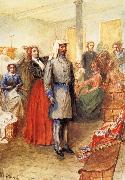 |
William Ludwell Sheppard -- Click Here
|
|
American, 1833-1912 |
|
 |
William Lionel Wyllie -- Click Here
|
|
(often simply W L Wyllie) (5 July 1851 - 6 April 1931) was a prolific English painter of maritime themes in both oils and watercolours.
Wyllie was born on 5 July 1851 at 67 Albany Street, Camden, London, the elder son of William Morison Wyllie (d. 1895), a prosperous minor-genre painter living in London and Wimereux, France. His mother was a singer, Katherine Smythe Wyllie (d. 1872).
Most of his early summers were spent in France with his parents. He began to draw from an early age, and his natural talent was encouraged by his father and by Lionel Smythe, his step brother. He was given a thorough artistic education; first at the Heatherley School of Fine Art, and then in 1866, aged 15, at the Royal Academy Schools. At the Royal Academy he studied under Edwin Henry Landseer, John Everett Millais and Frederic Leighton, among others.[2] He further demonstrated his precocious talent when he won the Turner Gold Medal in 1869 at the age of eighteen with Dawn after a Storm. |
|
 |
William Lees Judson -- Click Here
|
|
1842-1928
William Lees Judson was born in 1842 in Manchester, England, and moved to the United States with his parents when he was ten years old. After serving four years with the Illinois volunteers during the American Civil War, Judson studied art in New York and Paris. He settled in London, Ontario, where he became a successful portrait painter and art teacher. He moved to Chicago in 1890 but, suffering from failing health, he moved to Los Angeles in 1893. He settled on the banks of the Arroyo Seco in the Garvanza section of Los Angeles. A 1937 radio program noted that it was ??love at first sight?? when Judson saw the Arroyo Seco, and the area became his home for the rest of his life. Soon after his arrival, Judson was at the forefront of the Arroyo Guild of Craftsmen, an influential group of artists, sculptors and architects who fueled Southern California??s Arts and Crafts Movement. The beauty of the area stirred Judson to switch from portrait painting to landscapes, and his work attracted such favorable attention that in 1896 he was offered a professorship in drawing and painting at the University of Southern California. In the late 1890s, he founded the Los Angeles College of Fine Arts at his home in Garvanza (the present location of Judson Studios). In 1901, Judson's art college became USC??s College of Fine Arts, with Judson serving as dean from 1901 until his retirement in 1922. He died at his home in the studio building in October 1928. |
|
 |
William Larkin -- Click Here
|
|
(early 1580s - 1619) was an English painter active from 1609 until his death in 1619, known for his iconic portraits of members of the court of James I of England which capture in brilliant detail the opulent layering of textiles, embroidery, lace, and jewellery characteristic of fashion in the Jacobean era, as well as representing numerous fine examples of oriental carpets in Renaissance painting.Larkin was born in London in the early 1580s, and lived in the parishes of St Sepulchre-without-Newgate, Holborn, and St Anne Blackfriars. He became a freeman of the Worshipful Company of Painter-Stainers on 7 July 1606 under the patronage of Lady Arbella Stuart and Edward Seymour, 1st Earl of Hertford. Married before 1612, he buried a stillborn son in that year; a son, William, in 1613; and a daughter, Mary, in January 1614/15, all at St Anne Blackfriars. Another daughter called Mary was alive at the time of his death. He died sometime between the witnessing of his will on 10 April 1619 and its proving on 14 May. The date of his burial is unknown because the parish records were destroyed in the Great Fire of London in 1666 |
|
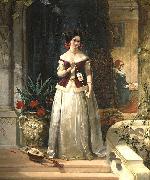 |
William Knight Keeling -- Click Here
|
|
(1807-1886) was a British (Victorian) artist, an illustrator of Walter Scott's novels and Shakespeare's plays, a founder and the third President of the Manchester Academy of Fine Arts.
William Knight Keeling. Love's Messenger. 1856William Knight Keeling was born in Manchester. He was apprenticed to a wood-engraver, and in the 1830s went to London and became an assistant of William Bradley (1801-1857), a Manchester-born portrait painter who moved to London in 1822 and established himself as a portrait painter. However, Keeling returned to Manchester in 1835 and firmly established himself as a popular and respected portrait and figurative painter in oils and watercolour, and a drawing-master. From 1830s, he actively exhibited in Manchester, Liverpool and elsewhere. In 1833, his painting 'The Bird's Nest' was awarded the silver medal from the Royal Manchester Institution. In 1841, he was elected a member of the New Society of Painters in Watercolours where he exhibited about 60 works.
In 1859, Keeling became a founder of the Manchester Academy of Fine Arts, and its third president from 1865 to 1877. He was a member of the Manchester Literary Club and the Brasenose Club.
In the 1850s, following the notion of the day, he travelled to Spain. This journey gave him new ideas, subjects, and motifs. Delicate details and clear and bright palette inspired by hot colours of the South, are distinctive features of his paintings and watercolours. In 1873, a Manchester newspaper praised one of his watercolours as "an exquisite work, perfectly Spanish". He also was influenced by works by the great Spanish artist Bartolome Esteban Murillo (1617-1682). Murilloes street children can be easily recognised in Keelinges compassionate depictions of poor children, both British and Spanish. His eSpanish Boye exhibited in Manchester in 1876, was described as "a very good example of the careful and accurate method pursued by the artist. He is thoroughly conscientious in all his professional work."
In 1851, in London, Keeling married Mary Ann Charker (b.1822). They had four children: Edith (b.1852), Dalton Harper (b.1853), Sidney Charles (b.1859), and Gertrude Ann (b.1862). Keeling died on 21.02.1886 in his house at Barton-upon-Irwell, Manchester.
Keeling did not strive for fame and glory, and remained in the background of the artistic life of his time, although many connoisseurs appreciated his works. Several his works have been preserved at Victoria & Albert Museum, London. In the 1870s, Wolverhampton industrialist and collector Sidney Cartwright purchased from a Manchester exhibition a large number of Keelinges works. In 1887, they were given to Wolverhampton Art Gallery which possesses today possibly the largest collection of Keelinges paitings and watercolours in the United Kingdom.
|
|
 |
William Keith -- Click Here
|
|
(Nov 18, 1838 - April 13, 1911) was a Scottish-American painter famous for his California landscapes.
Keith was born in Oldmeldrum, Aberdeenshire, Scotland, and emigrated to the United States in 1850. He lived in New York City, and became an apprentice wood engraver in 1856. He first traveled to the American West in 1858, after being assigned to do illustrations for Harper's Magazine. He moved to England briefly, working for the London Daily News. |
|
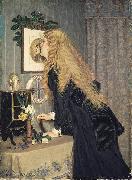 |
William John Hennessy -- Click Here
|
|
(July 11, 1839 - December 27, 1917) was an Irish artist.
William John Hennessy was born in Thomastown, County Kilkenny in 1839. His father, John Hennessy, was forced to leave Ireland in 1848 as a result of his involvement in the Young Ireland movement. He landed in Canada and settled in New York. William, his mother Catherine, and brother joined their father there in 1849. He gained admittance to the National Academy of Design in 1854 and exhibitioned his first works there.
Hennessy developed a skill in wood engraving and was hired to illustrate the works of renowned poets, including that of Tennyson, Longfellow and Whittier. As an American he became the co-founder of the Artists Fund Society, and an honorary member of the American Society of Painters in Watercolours. In 1870 he moved to London where he became a member of the Royal Institute of Oil Painters in 1902. Between 1879 and 1907 the Royal Hibernian Academy displayed eight of his paintings.
|
|
 |
William James Muller -- Click Here
|
|
British Painter, 1812-1845, English landscape and figure painter, was born at Bristol, his father, a Prussian, being curator of the museum. He first studied painting under JB Pyne. His early subjects deal mainly with the scenery of Gloucestershire and Wales, and he learned much from his study of Claude, Ruysdael, and earlier landscape-painters. In 1833 he figured for the first time in the Royal Academy with his "Destruction of Old London Bridge--Morning," and next year he made a tour through France, Switzerland and Italy. Four years later he visited Athens, extending his travels to Egypt, and in the sketches executed during this period and the paintings produced from them his power and individuality are apparent. Shortly after his return he left Bristol and settled in London, where he exhibited regularly. In 1840 he again visited France, where he executed a series of sketches of Renaissance architecture, twenty-five of which were lithographed and published in 1841, in a folio entitled "The Age of Francis I. of France." In 1843 he accompanied, |
|
 |
William James Hubard -- Click Here
|
|
British/American Artist , Silhouettist , Sculptor, and Scientist , 1807-1862 |
|
 |
William Jacob Baer -- Click Here
|
|
William Jacob Baer (January 29, 1860 - 1941) considered the foremost American miniature painter was born in Cincinnati, Ohio January 29, 1860 and died in East Orange, New Jersey in 1941 |
|
 |
William J.Glackens -- Click Here
|
|
March 13.1870-May 22.1938,American painter and illustrator. He graduated in 1889 from Central High School, Philadelphia, where he had known Albert C. Barnes, who later became a noted collector of modern art. He became a reporter-illustrator for the Philadelphia Record in 1891 and later for the Philadelphia Press. In 1892 he began to attend evening classes in drawing at the Pennsylvania Academy of Fine Arts, studying under Thomas Anshutz. In the same year he became a friend and follower of Robert Henri, who persuaded him to take up oil painting in 1894. |
|
 |
William J. McCloskey -- Click Here
|
|
painted Lady Apples in Overturned Basket. Signed W.J. McCloskey in 1941
United States (1859- 1941 ) - Painter |
|
|
|
 |
William Holyoake -- Click Here
|
|
British genre and historical painter , 1834-1894 |
|
 |
William Holmes Sullivan -- Click Here
|
|
painted Lady Godiva in 1877 |
|
 |
william holman hunt,o.m.,r.w.s -- Click Here
|
|
1827-1910
English painter. He worked as an office clerk in London from 1839 to 1843, attending drawing classes at a mechanics' institute in the evenings and taking weekly lessons from the portrait painter Henry Rogers. Holman Hunt overcame parental opposition to his choice of career in 1843, and this determined attitude and dedication to art could be seen throughout his working life. In July 1844, at the third attempt, he entered the Royal Academy Schools. His earliest exhibited works, such as Little Nell and her Grandfather (exh. British Institution, 1846; Sheffield, Graves A.G.), reveal few traces of originality, but the reading of John Ruskin's Modern Painters in 1847 was of crucial importance to Holman Hunt's artistic development. It led him to abandon the ambitious Christ and the Two Marys (Adelaide, A.G. S. Australia) in early 1848, when he realized its traditional iconography would leave his contemporaries unmoved. His next major work, the Flight of Madeline and Porphyro during the Drunkenness Attending the Revelry (1848; London, Guildhall A.G.), from John Keats's 'Eve of St Agnes', though displaced into a medieval setting, dramatized an issue dear to contemporary poets and central to Holman Hunt's art: love and youthful idealism versus loyalty to one's family. His first mature painting, it focuses on a moment of psychological crisis in a cramped and shallow picture space. |
|
 |
William Holman Hunt -- Click Here
|
|
1827-1910
British
William Holman Hunt Galleries
Hunt's intended middle name was "Hobman", which he disliked intensely. He chose to call himself Holman when he discovered that his middle name had been misspelled this way after a clerical error at his baptism at the church of Saint Mary the Virgin, Ewell.[1] Though his surname is "Hunt", his fame in later life led to the inclusion of his middle name as part of his surname, in the hyphenated form "Holman-Hunt", by which his children were known.
After eventually entering the Royal Academy art schools, having initially been rejected, Hunt rebelled against the influence of its founder Sir Joshua Reynolds. He formed the Pre-Raphaelite movement in 1848, after meeting the poet and artist Dante Gabriel Rossetti. Along with John Everett Millais they sought to revitalise art by emphasising the detailed observation of the natural world in a spirit of quasi-religious devotion to truth. This religious approach was influenced by the spiritual qualities of medieval art, in opposition to the alleged rationalism of the Renaissance embodied by Raphael. He had many pupils including Robert Braithwaite Martineau (best known for his work "Last Days in the Old Home") who was a moderately successful painter although he died young.
The Hireling Shepherd, 1851Hunt's works were not initially successful, and were widely attacked in the art press for their alleged clumsiness and ugliness. He achieved some early note for his intensely naturalistic scenes of modern rural and urban life, such as The Hireling Shepherd and The Awakening Conscience. However, it was with his religious paintings that he became famous, initially The Light of the World (now in the chapel at Keble College, Oxford, with a later copy in St Paul's Cathedral), having toured the world. After travelling to the Holy Land in search of accurate topographical and ethnographical material for further religious works, Hunt painted The Scapegoat, The Finding of the Saviour in the Temple and The Shadow of Death, along with many landscapes of the region. Hunt also painted many works based on poems, such as Isabella and The Lady of Shalott.
All these paintings were notable for their great attention to detail, their hard vivid colour and their elaborate symbolism. These features were influenced by the writings of John Ruskin and Thomas Carlyle, according to whom the world itself should be read as a system of visual signs. For Hunt it was the duty of the artist to reveal the correspondence between sign and fact. Out of all the members of the Pre-Raphaelite Brotherhood Hunt remained most true to their ideals throughout his career. He eventually had to give up painting because failing eyesight meant that he could not get the level of quality that he wanted. His last major work, The Lady of Shalott, was completed with the help of an assistant (Edward Robert Hughes).
Hunt married twice. After a failed engagement to his model Annie Miller, he married Fanny Waugh, who later modelled for the figure of Isabella. When she died in childbirth in Italy he sculpted her tomb up at Fiesole, having it brought down to the English Cemetery, beside the tomb of Elizabeth Barrett Browning. His second wife, Edith, was Fanny's sister. At this time it was illegal in Britain to marry one's deceased wife's sister, so Hunt was forced to travel abroad to marry her. This led to a serious breach with other family members, notably his former Pre-Raphaelite colleague Thomas Woolner, who had married Fanny and Edith's third sister Alice.
Hunt's autobiography Pre-Raphaelitism and the Pre-Raphaelite Brotherhood (1905) was written to correct other literature about the origins of the Brotherhood, which in his view did not adequately recognise his own contribution. Many of his late writings are attempts to control the interpretation of his work.
In 1905, he was appointed to the Order of Merit by King Edward VII. At the end of his life he lived in Sonning-on-Thames. |
|
 |
William Holbrook Beard -- Click Here
|
|
1824-1900
William Holbrook Beard Gallery |
|
 |
William Hogarth -- Click Here
|
|
British
1697-1764
William Hogarth Galleries
Early satirical works included an Emblematical Print on the South Sea Scheme (c.1721), about the disastrous stock market crash of 1720 known as the South Sea Bubble, in which many English people lost a great deal of money. In the bottom left corner, he shows Protestant, Catholic, and Jewish figures gambling, while in the middle there is a huge machine, like a merry-go-round, which people are boarding. At the top is a goat, written below which is "Who'l Ride" and this shows the stupidity of people in following the crowd in buying stock in The South Sea Company, which spent more time issuing stock than anything else. The people are scattered around the picture with a real sense of disorder, which represented the confusion. The progress of the well dressed people towards the ride in the middle shows how foolish some people could be, which is not entirely their own fault.
Other early works include The Lottery (1724); The Mystery of Masonry brought to Light by the Gormogons (1724); A Just View of the British Stage (1724); some book illustrations; and the small print, Masquerades and Operas (1724). The latter is a satire on contemporary follies, such as the masquerades of the Swiss impresario John James Heidegger, the popular Italian opera singers, John Rich's pantomimes at Lincoln's Inn Fields, and the exaggerated popularity of Lord Burlington's prot??g??, the architect and painter William Kent. He continued that theme in 1727, with the Large Masquerade Ticket. In 1726 Hogarth prepared twelve large engravings for Samuel Butler's Hudibras. These he himself valued highly, and are among his best book illustrations.
In the following years he turned his attention to the production of small "conversation pieces" (i.e., groups in oil of full-length portraits from 12 to 15 in. high). Among his efforts in oil between 1728 and 1732 were The Fountaine Family (c.1730), The Assembly at Wanstead House, The House of Commons examining Bambridge, and several pictures of the chief actors in John Gay's popular The Beggar's Opera.
One of his masterpieces of this period is the depiction of an amateur performance of John Dryden's The Indian Emperor, or The Conquest of Mexico (1732?C1735) at the home of John Conduitt, master of the mint, in St George's Street, Hanover Square.
Hogarth's other works in the 1730s include A Midnight Modern Conversation (1733), Southwark Fair (1733), The Sleeping Congregation (1736), Before and After (1736), Scholars at a Lecture (1736), The Company of Undertakers (Consultation of Quacks) (1736), The Distrest Poet (1736), The Four Times of the Day (1738), and Strolling Actresses Dressing in a Barn (1738). He may also have printed Burlington Gate (1731), evoked by Alexander Pope's Epistle to Lord Burlington, and defending Lord Chandos, who is therein satirized. This print gave great offence, and was suppressed (some modern authorities, however, no longer attribute this to Hogarth). |
|
 |
William Hodges -- Click Here
|
|
English Painter, 1744-1797
English painter. He first attended classes at William Shipley's Academy in the Strand, London, and from 1758 to 1765 was apprenticed to Richard Wilson (about whom he published a short biographical essay in 1790). Hodges followed Wilson's classical landscape style periodically throughout his career. |
|
 |
William Hoare -- Click Here
|
|
William Hoare of Bath RA (c. 1707 - 12 December 1792) was an English painter and printmaker, co-founder of the Royal Academy noted for his pastels.
Born near Eye, Suffolk, Hoare received a gentlemanes education in Faringdon. He showed a marked aptitude for drawing and was sent to London to study under Giuseppe Grisoni, who had left Florence for London in 1715. When Grisoni returned to Italy in 1728, Hoare went with him, travelling to Rome and continuing his studies under the direction of Francesco Imperiali. He remained in Rome for nine years, returning to London in 1737/8.
Failing to establish himself in London, Hoare settled in Bath, an expanding spa town popular with the wealthier classes. He obtained numerous commissions, the most important being for official portraits of social leaders of the day (including George Frideric Handel) and political men. There are several versions of most of these, suggesting that he had a studio, and they were further publicised by the production of mezzotints by leading engravers of the day. Hoare himself was a delicate etcher and published a number of private plates, mostly of family and friends, including Miss Hoare (probably Mary), Christopher Anstey and the 3rd Duke of Beaufort. His pastels were influenced by Rosalba Carriera. |
|
|
|
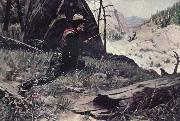 |
William Herbert Dunton -- Click Here
|
|
a self-taught artist . American Painter , 1878-1936
was an American artist who was one of the founding members of the Taos Society of Artists and part of the Taos art colony. He first came to Taos, New Mexico, in 1912. Among his proteges in Western art was Harold Dow Bugbee of Clarendon and Canyon in the Texas Panhandle. |
|
 |
William Henry Shelton -- Click Here
|
|
A nineteenth century painter, etcher and illustrator.
American , 1840-1932
|
|
 |
William Henry Pyne -- Click Here
|
|
English Painter, 1769-1843
English painter, illustrator and writer. He trained at the drawing academy of Henry Pars (c. 1733-1806) in London and first exhibited at the Royal Academy in 1790. His drawings were almost always pen, ink and colour wash (e.g. Gossip at the Cottage Door, 1794; London, BM). His most characteristic works are the illustrations for the books Microcosm (1803-8) and The Costume of Great Britain (1808) in which he successfully placed groups of well-observed characters in picturesque settings. Pyne had been a founder of the Old Water-Colour Society in 1804 but resigned in 1809 when it refused to increase its membership to greater than 24 artists. |
|
|
|
|
|
 |
William Henry Knight -- Click Here
|
|
(26 September 1823 - 31 July 1863) was an English portrait and genre painter.
Knight was born in Newbury, Berkshire where his father, John Knight, was a schoolmaster. He was to become a solicitor, but gave up his law studies after two of his paintings were accepted by the annual exhibition of the Society of British Artists. He moved to London in 1855, taking lodgings in Kennington Road, Lambeth, and supporting himself by drawing crayon portraits while studying in the British Museum and in the schools of the Royal Academy.
|
|
 |
William Henry Hunt,OWS -- Click Here
|
|
1790-1864
was an English watercolour painter. He was born near Long Acre, London, and was apprenticed in about 1805 to John Varley, the landscape-painter, with whom he remained five or six years. He exhibited three oil pictures at the Royal Academy in 1807. He became connected with the Society of Painters in Water Colours at its beginning, and was elected an associate in 1824 and a full member in 1827. Until the year of his death, he was one of the most prolific contributors to the Society's exhibitions. Many years of Hunt's uneventful but industrious life were spent at Hastings. He died of apoplexy. Hunt was one of the creators of the English school of water-color painting. His subjects, especially those of his later life, are extremely simple; but, by the delicacy, humor and fine power of their treatment, they rank second to works of the highest art only. Considered technically, his works exhibit all the resources of the water-color painter's craft, from the purest transparent tinting to the boldest use of gouache, rough paper and scraping for texture. His sense of color is perhaps as true as that of any English artist. He was, says John Ruskin, all in all, the finest ever painter of still life. Several characteristic examples of Hunt's work, as the "Boy and Goat," "Brown Study and Plums," "Primroses and Birds' Nests" are in the Victoria and Albert Museum. |
|
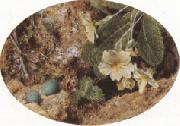 |
william henry hunt,o.w.s -- Click Here
|
|
1790-1864
was an English watercolour painter. He was born near Long Acre, London, and was apprenticed in about 1805 to John Varley, the landscape-painter, with whom he remained five or six years. He exhibited three oil pictures at the Royal Academy in 1807. He became connected with the Society of Painters in Water Colours at its beginning, and was elected an associate in 1824 and a full member in 1827. Until the year of his death, he was one of the most prolific contributors to the Society's exhibitions. Many years of Hunt's uneventful but industrious life were spent at Hastings. He died of apoplexy. Hunt was one of the creators of the English school of water-color painting. His subjects, especially those of his later life, are extremely simple; but, by the delicacy, humor and fine power of their treatment, they rank second to works of the highest art only. Considered technically, his works exhibit all the resources of the water-color painter's craft, from the purest transparent tinting to the boldest use of gouache, rough paper and scraping for texture. His sense of color is perhaps as true as that of any English artist. He was, says John Ruskin, all in all, the finest ever painter of still life. Several characteristic examples of Hunt's work, as the "Boy and Goat," "Brown Study and Plums," "Primroses and Birds' Nests" are in the Victoria and Albert Museum. |
|
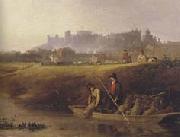 |
William henry hunt -- Click Here
|
|
English Painter, 1790-1864
was an English watercolour painter. He was born near Long Acre, London, and was apprenticed in about 1805 to John Varley, the landscape-painter, with whom he remained five or six years. He exhibited three oil pictures at the Royal Academy in 1807. He became connected with the Society of Painters in Water Colours at its beginning, and was elected an associate in 1824 and a full member in 1827. Until the year of his death, he was one of the most prolific contributors to the Society's exhibitions. Many years of Hunt's uneventful but industrious life were spent at Hastings. He died of apoplexy. Hunt was one of the creators of the English school of water-color painting. His subjects, especially those of his later life, are extremely simple; but, by the delicacy, humor and fine power of their treatment, they rank second to works of the highest art only. Considered technically, his works exhibit all the resources of the water-color painter's craft, from the purest transparent tinting to the boldest use of gouache, rough paper and scraping for texture. His sense of color is perhaps as true as that of any English artist. He was, says John Ruskin, all in all, the finest ever painter of still life. Several characteristic examples of Hunt's work, as the "Boy and Goat," "Brown Study and Plums," "Primroses and Birds' Nests" are in the Victoria and Albert Museum. |
|
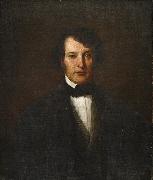 |
William Henry Furness -- Click Here
|
|
(1802-1896) was an American clergyman, theologian, reformer and abolitionist. Following the American Civil War, he raised funds for Black schools in the South, including Morehouse College.
A graduate of the Theological Department of Harvard University, Furness became the Minister of the First Unitarian Church of Philadelphia at the age of 22. A close friend of Ralph Waldo Emerson, Furness presided over a period marked by the growth and increasing prosperity for First Church. A fiery abolitionist, Furness was a supporter of the rights of all segments of society, including African-Americans and Jews. He also lived to see the construction of the current church building in 1885 in the role of Minister Emeritus.
Rev. Furness was the father of painter William Furness, Shakespearean scholar Horace Howard Furness, architect Frank Furness, and author and translator Annis Furness Lee.
|
|
 |
William Hays -- Click Here
|
|
May 9, 1819 C February 7, 1875 |
|
 |
William Havell -- Click Here
|
|
English Painter, 1782-1857 |
|
 |
William Harnett -- Click Here
|
|
(August 10, 1848 - October 29, 1892) was an Irish-American painter known for his trompe l'oeil still lifes of ordinary objects.
Harnett was born in Clonakilty, County Cork, Ireland during the time of the potato famine. Shortly after his birth his family emigrated to America, settling in Philadelphia. Becoming a United States citizen in 1868, he made a living as a young man by engraving designs on table silver, while also taking night classes at the Pennsylvania Academy of the Fine Arts and later, in New York, at Cooper Union and at the National Academy of Design. His first known oil painting, a still life, dates from 1874.
|
|
 |
William Hamilton -- Click Here
|
|
English Painter, 1751-1801, was an English painter and illustrator. Hamiliton was born in Chelsea, London, but travelled and worked in Italy with Antonio Zucchi for several years. He trained first as an architectural draftsman, but soon moved to theatrical portraits and scenes from plays. Hamilton became very well known for his paintings depicting episodes from the plays of Shakespeare and for his illustrations of poems. He was commissioned to create works for John Boydell's Shakespeare Gallery, Macklin's Bible and Bowyer's English History. These were widely reproduced in popular prints. Francesco Bartolozzi engraved a number of Hamilton??s best known works. He also painted modern events, such as the execution of Marie Antoinette, in the manner of epic historical drama. Hamilton's style shows the influence of the cult of sentiment typical of the period, resembling the work of Angelica Kauffmann. He also sometimes adopts aspects of Fuseli's dramatic distortions in composition and figure drawing. He became an associate member of the Royal Academy from 1784, and was made a full member in 1789. |
|
|
|
 |
William Glackens -- Click Here
|
|
1870-1938
William Glackens Galleries
William James Glackens (March 13, 1870?CMay 22, 1938) was a U.S. realist painter.
Glackens studied at the Pennsylvania Academy of the Fine Arts and later moved to New York City, where he co-founded what came to be called the Ashcan School art movement. This group of artists, dubbed by the press "the Eight Independent Painters" or The Eight, chose to exhibit their works without pre-approval by the juries of the existing art establishment. He became known for his dark-hued paintings of street scenes and daily life in the city's neighborhoods. His later work was brighter in tone, and showed the influence of Renoir. During much of his career as a painter, Glackens also worked as an illustrator for newspapers and magazines in Philadelphia and New York City. |
|
 |
William Gershom Collingwood -- Click Here
|
|
artist and historian, (1854-1932)
was an author, artist, antiquary and was also Professor of Fine Arts at the Reading University. He was born in Liverpool. In 1872, he went to University College, Oxford, where he met John Ruskin. During the summer of 1873 Collingwood visited Ruskin at Brantwood, Coniston. Two years later Collingwood was working at Brantwood with Ruskin and his associates. Ruskin admired his draughtsmanship, and so Collingwood studied at the Slade School of Art between 1876 and 1878. He exhibited at the Royal Academy in 1880. For many years Collingwood dedicated himself to helping Ruskin, staying at Brantwood as Ruskin's assistant and travelling with him to Switzerland. In 1883 he married Edith Mary Isaac (1857C1928) and settled near to Ruskin in the Lake District. Collingwood edited a number of Ruskin's texts and published a biography of Ruskin in 1893. In 1896, Arthur Ransome met the Collingwoods and their children, Dora (later Mrs Ernest Altounyan), Barbara (later Mrs Oscar Gnosspelius), Ursula, and Robin (the later historian and philosopher). Ransome learned to sail in Collingwood's boat, Swallow, and became a firm friend of the family, even proposing marriage to both Dora and Barbara (on separate occasions). After a summer of teaching Collingwood's grandchildren to sail in Swallow II in 1928, Ransome wrote the first book in his Swallows and Amazons series. He used the names of some of Collingwood's grandchildren for his characters, the Swallows. By the 1890s Collingwood had become a skilled painter and also joined the Cumberland and Westmorland Antiquarian and Archaeological Society. He wrote a large number of papers for its Transactions; becoming editor in 1900. Collingwood was particularly interested in Norse lore and the Norsemen, and he wrote a novel, Thorstein of the Mere which was a major influence on Arthur Ransome. Collingwood was a member of the Viking Club and served as its president. His study of Norse and Anglican archaeology made him widely recognized as a leading authority. Following Ruskin's death Collingwood continued to help for a while with secretarial work at Brantwood, but in 1905 went to University College, Reading and served as professor of fine art from 1907 until 1911. |
|
 |
William George Richardson -- Click Here
|
|
artist (b at Nottingham, Eng 12 June 1833; d at Sussex, NB 18 Nov 1889) |
|
|
|
 |
William Frederick Yeames,RA -- Click Here
|
|
1835-1918
English painter. The son of a British consul in Russia, Yeames was sent to school in Dresden after the death of his father in 1842. He also studied painting there. The collapse of the Yeames family fortune resulted in a move to London in 1848, where Yeames learnt anatomy and composition from George Scharf (1788-1860). He later took lessons from F. A. Westmacott. In 1852 he continued his artistic education in Florence under Enrico Pollastrini and Raphael Buonajuto, from whom he learnt the methods of the Old Masters. He drew from frescoes by Ghirlandaio, Gozzoli and Andrea del Sarto and painted in the Life School at the Grand Ducal Academy. He then went to Rome and made landscape studies and copied Old Masters, including Raphael's frescoes in the Vatican. His extensive study of Italian art gave him a precision and facility that assisted his artistic success upon his return to London in 1859. There he set up a studio in Park Place and became involved with the ST JOHN'S WOOD CLIQUE. He exhibited at the Royal Academy and the British Institution from 1859 and became an ARA in 1866. |
|
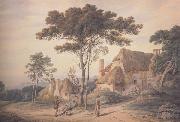 |
William Frederick Wells -- Click Here
|
|
A landscape painter in watercolor, Wells was the true founder of the Society of Painters in Watercolors in 1804 and its president in 1806-07. He studied under J. J. Barralet and exhibited at the Royal Academy from 1795 to 1804 and at the Watercolor Society to 1813, when he resigned.
|
|
|
|
william frederick mitchell -- Click Here
|
|
c.1845-1914
|
|
|
|
|
|
 |
William Fettes Douglas -- Click Here
|
|
painted Artist in 1845 |
|
 |
William Etty -- Click Here
|
|
1787-1849
English
William Etty Location
English painter. Born into a Methodist family, he was the seventh child of a miller and baker in Feasegate, York, and in 1798 he was apprenticed as a printer to Robert Peck, publisher of the Hull Packet. Financial support from his uncle, a banker, allowed him to go to London in 1805, where he entered the Royal Academy Schools in 1806. For a year, in 1807-8, he was a pupil of Thomas Lawrence, who greatly influenced him. Following the death of his uncle in 1809 he became financially secure. From 1811 he exhibited regularly at the Royal Academy and the British Institution and in 1816 worked in the studio of Jean-Baptiste Regnault in Paris. |
|
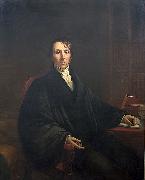 |
William Ellery Channing -- Click Here
|
|
(April 7, 1780 - October 2, 1842) was the foremost Unitarian preacher in the United States in the early nineteenth century and, along with Andrews Norton, one of Unitarianism's leading theologians. He was known for his articulate and impassioned sermons and public speeches, and as a prominent thinker in the liberal theology of the day. |
|
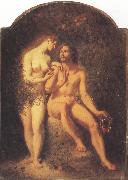 |
William Edward frost R.A. -- Click Here
|
|
1810-1877
was an English painter of the Victorian era. Virtually alone among English artists in the middle Victorian period, he devoted his practice to the portrayal of the female nude. Frost was educated in the schools of the Royal Academy, beginning in 1829; he established a reputation as a portrait painter before branching into historical and mythological subjects, including the sub-genre of fairy painting that was characteristic of Victorian art. In 1839 he won the Royal Academy's gold medal for his "Prometheus Bound," and in 1843 he won a prize in the Westminster Hall competition for his "Una Alarmed by Fauns" (a subject from Spenser's The Faerie Queen). He was elected an associate member of the Royal Academy in 1846, and a full member in 1870. Frost is widely recognized as a follower of William Etty, who preceded him as the primary British painter of nudes in the second quarter of the nineteenth century. |
|
|
|
 |
William Dyce -- Click Here
|
|
1806-1864
Scottish painter, educationalist, theorist and designer. The son of a lecturer in medicine at Marischal College, Aberdeen, he studied medicine and theology, obtaining his Master's degree in 1823. Episcopalian by upbringing, Dyce was expected, like his cousin, the scholar and bibliophile Alexander Dyce (1798-1869), to proceed to Oxford to take orders. His early interest in art found an outlet in portraiture, his first commission being Sir James M. D. M'Grigor (1823; U. Aberdeen). His first attempt at history painting, The Infant Hercules Strangling the Serpents sent by Juno to Destroy Him (1824; Edinburgh, N.G.), much influenced by Reynolds, was shown to Sir Thomas Lawrence, who is said to have encouraged Dyce to enter the Royal Academy Schools in 1825. After a few months he set off for Rome in the company of Alexander Day; |
|
 |
William Dunlap -- Click Here
|
|
(1 February 1766 - 28 September 1839) was a pioneer of the American theater. He was a producer, playwright, and actor, as well as a historian. He managed two of New York's earliest and most prominent theaters, the John Street Theatre (from 1796?C98) and the Park Theatre (from 1798?C1805). He was also an artist, despite losing an eye in childhood.
He was born in Perth Amboy New Jersey, the son of an army officer wounded at the Battle of Quebec in 1759. In 1783, he produced a portrait of George Washington, now owned by the United States Senate, and later studied art under Benjamin West in London. After returning to America in 1787, he worked exclusively in the theater for 18 years, resuming painting out of economic necessity in 1805. By 1817, he was a full-time painter.
In his lifetime he produced more than sixty plays, most of which were adaptations or translations from French or German works. A few were original: these were based on American themes and had American characters. However, he is best known for his encyclopedic three-volume History of the Rise and Progress of the Arts of Design in the United States, which was published in 1834, and which is now an invaluable source of information about artists, collecting, and artistic life generally in the colonial and federal periods.
|
|
 |
William Dobson -- Click Here
|
|
1610-1646
English
William Dobson Locations
William Dobson (March 4, 1610 ?C October 28, 1646) was a portraitist and one of the first notable English painters, praised by his contemporary John Aubrey as the most excellent painter that England has yet bred.
Dobson was born in London the son of a decorative artist, and was apprenticed to William Peake and probably later joined the studio of Francis Cleyn. He is believed to have had access to the Royal Collection and to have copied works by Titian and Anthony Van Dyck, King Charles I chief painter. The colour and texture of Dobson work was influenced by Venetian art, but Van Dyck style has little apparent influence on Dobson. Van Dyck himself discovered Dobson when he noticed one of the young artists pictures in a London shop window. He introduced Dobson to the King, who had Dobson paint himself, his sons and members of the court.
When Van Dyck died in 1641, Dobson probably succeeded him as sergeant-painter to the King, though proof is lacking. During the English Civil War Dobson was based at the Royalist centre of Oxford and painted many leading Cavaliers. His portrait of the future Charles II as Prince of Wales at the age of around twelve is a notable baroque composition, and perhaps his finest work. He also painted the Duke of York, Prince Rupert of the Rhine and Prince Maurice.
Charles II when Prince of Wales, circa 1642 or 1643.Around sixty of Dobson works survive, mostly half-length portraits most of them dated from 1642 or later. The thick impasto of his early work gave way to a mere skim of paint, perhaps reflecting a wartime scarcity of materials. After Oxford fell to the Parliamentarians, in June 1646, Dobson returned to London. Now without patronage, he was briefly imprisoned for debt and died in poverty at the age of thirty-six.
Dobson is regarded as a talented painter with a fine sense for colour and good powers of observation. However, an entirely English training such as Dobson could not be first rate in the early 17th century and he had technical weaknesses[citation needed]. There are examples of Dobson work at Tate Britain and the National Portrait Gallery in London and at several English country houses. The most comprehensive study of Dobson and his work is William Dobson, 1611?C1646 an exhibition catalogue written by M. Rogers for a 1983 exhibition at the National Portrait Gallery. |
|
 |
William Dexter -- Click Here
|
|
Australian, 1818-1860,was an English-Australian painter. Dexter was born at Melbourne, Derbyshire, England, and became an apprentice at the Derby China factory painting flowers and birds in the Chinese and Japanese styles. Dexter then studied at Paris, and returning to England, married Caroline nee Harper at Nottingham in 1843. Dexter had a picture in the Royal Academy exhibition in 1851 and another in 1852. Dexter then sailed to Australia and arrived at Sydney on 8 October 1852. Dexter was at Bendigo in August 1853, where William Howitt heard him advocating republican doctrines at a meeting of diggers. His wife came out from England at the end of 1854, and in March 1855 they together opened a gallery of arts and school of design in Bathurst Street, Sydney. This apparently was not a success for they went to live at Stratford, Victoria, in 1856, and there made the acquaintance of Angus McMillan. In 1857 Dexter exhibited six oils and three watercolours at the first Victorian Society of Fine Arts exhibition, held in Melbourne. Soon afterwards he returned to Sydney as the Dexters had separated. He became a partner in a sign-writing business, dying there in 1860. |
|
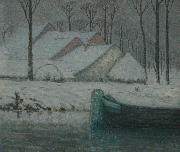 |
William Degouwe de Nuncques -- Click Here
|
|
(28 February 1867 - 1 March 1935) was a Belgian painter.
He was born at Montherme, the Ardennes, France, of an old aristocratic family, After the Franco-Prussian war (1870-71), his parents settled in Belgium, and he taught himself to paint. In 1894 he married fellow artist Juliette Massin, who introduced him to the circle of Symbolist poets, who had a considerable influence on his style. He belonged to the avant-garde group Les XX and later exhibited at La Libre Esthetique. He travelled widely and painted views of Italy, Austria and France, often of parks at night. His best-known pictures, Pink House (1892), The Angels (1894), and Peacocks (1896), demonstrate the magical quality of his work. Pink House is thought to have been a major influence on Surrealism, especially the paintings of Rene Magritte.
He is supposed to have said "To make a painting, all you need to do is to take some paints, draw some lines, and fill the rest up with feelings." A regular exhibitor in Paris, he was championed by Puvis de Chavannes and Maurice Denis.
From 1900 to 1902 he and his wife lived in the Balearic Islands, where he painted the rugged coastline and the orange groves. After suffering a religious crisis around 1910, he painted pictures that revealed his tormented state of mind, and during World War I, while a refugee in the Netherlands, he produced only minor works. In 1919 he was overwhelmed by the death of his wife and lost the use of one hand. In 1930 he married the woman who had helped him through the crisis. They settled in Stavelot, where he spent his last few years painting snow-covered landscapes.
The best collection of his paintings is in the Kröller-Meller Museum, Otterlo.
|
|
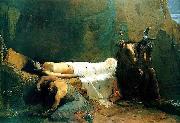 |
William de Leftwich Dodge -- Click Here
|
|
(1867-1935) was an American artist best known for his murals, which were commissioned for both public and private buildings.
Dodge was born at Liberty, Virginia in the Piedmont near Lynchburg. In 1879, his mother, Mary de Leftwich Dodge, an aspiring artist, moved her family to Europe. After living initially in Munich they moved to Paris, where she worked on art. Dodge later followed her example and became an artist. He spent most of his childhood years in France, where his mother was working on art. He studied at the École des Beaux Arts and took first place in the examinations in 1881. He also studied under Jean-Leon Gerôme and with Raphaël Collin at the Academie Colarossi,[1] and traveled to Munich for studies there.
|
|
|
|
|
| | |
|
|
|
|